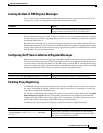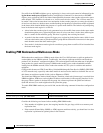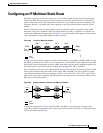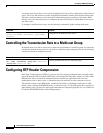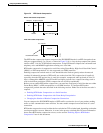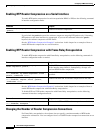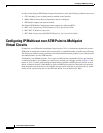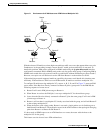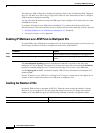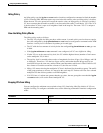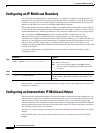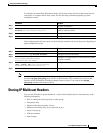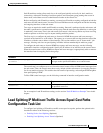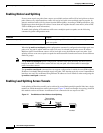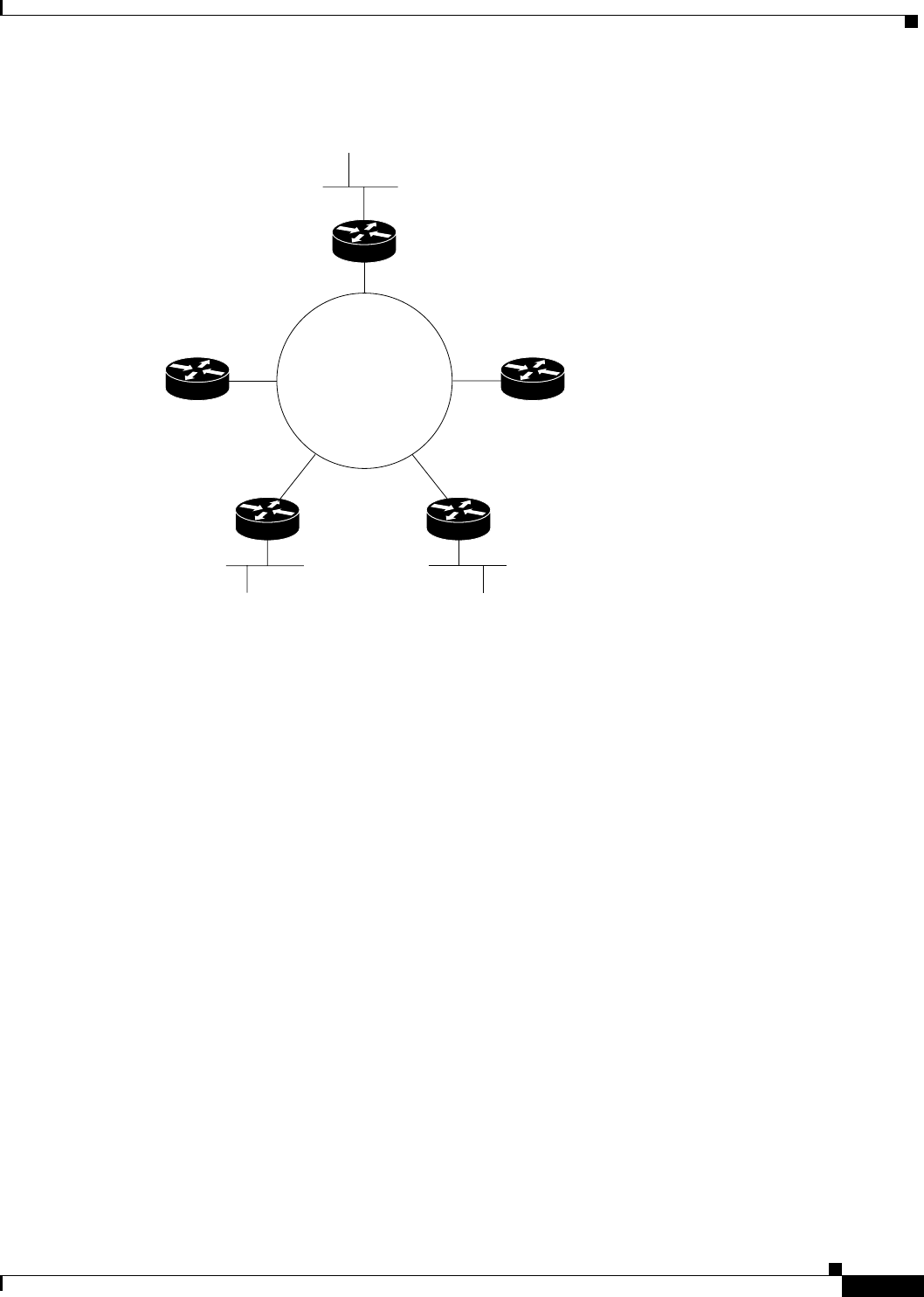
Configuring IP Multicast Routing
Configuring IP Multicast over ATM Point-to-Multipoint Virtual Circuits
IPC-435
Cisco IOS IP Configuration Guide
Figure 71 Environment for IP Multicast over ATM Point-to-Multipoint VCs
With the advent of IP multicast, where high-rate multicast traffic can occur, that approach does not scale.
Furthermore, in the preceding example, routers B and C would get data traffic they do not need. To
handle this problem, PIM can be configured in NBMA mode using the ip pim nbma-mode interface
configuration command. PIM in NBMA mode works only for sparse mode groups. Configuring PIM in
NBMA mode would allow only routers D and E to get the traffic without distributing to routers B and C.
However, two copies are still delivered over the link from Router A to the multiaccess WAN.
If the underlying network supported multicast capability, the routers could handle this situation more
efficiently. If the multiaccess WAN were an ATM network, IP multicast could use multipoint VCs.
To configure IP multicast using multipoint VCs, routers A, B, C, D, and E in Figure 71 must run PIM
sparse mode. If the Receiver directly connected to Router D joins a group and A is the PIM RP, the
following sequence of events occur:
1. Router D will send a PIM join message to Router A.
2. When Router A receives the PIM join, it sets up a multipoint VC for the multicast group.
3. Later, when the Receiver directly connected to Router E joins the same group, E will send a PIM
join message to Router A.
4. Router A will see there is a multipoint VC already associated with the group, and will add Router E
to the existing multipoint VC.
5. When the Source sends a data packet, Router A can send a single packet over its link that gets to
both Router D and Router E. The replication occurs in the ATM switches at the topological diverging
point from Router A to Router D and Router E.
If a host sends an IGMP report over an ATM interface to a router, the router adds the host to the
multipoint VC for the group.
This feature can also be used over ATM subinterfaces.
Router A
Router B
Router D Router E
43280
Multiaccess
WAN
Receiver
Router C
Receiver
Leaf
Source



